HOME > Company/Investor Relations > Business Strengths and Strategic Products
Business Strengths and Strategic Products
Our Strengths
1. Business for Solving Social Issues
The SWCC Group has developed a business model to solve various social issues such as "Environment / Energy", "Disaster Prevention / Infrastructure", "Life / Mobility", "Education / Human Resource Development", and "Medical Care / Health" through various products, technologies and services that we have developed since our establishment. We are building a new business model. Aiming to build a sustainable society, we will continue to respond to environmental and social challenges through our business activities.
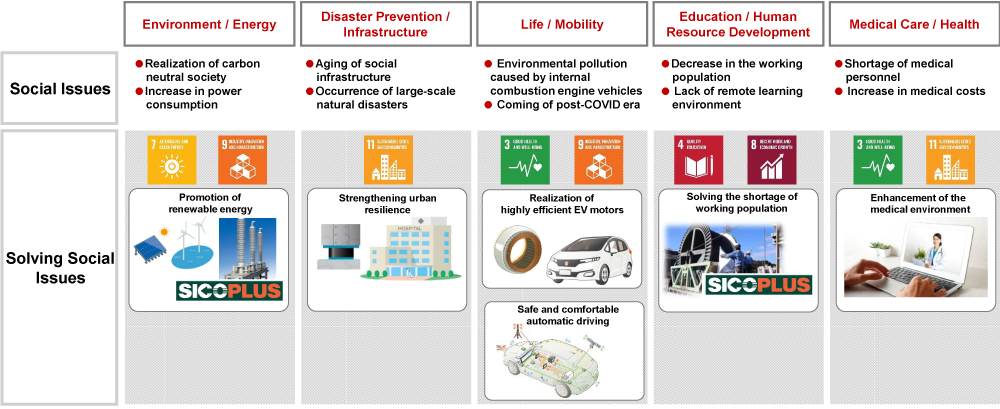
2. Abundant elemental technologies accumulated since the company's foundation
The SWCC Group has a wealth of elemental technologies accumulated since its establishment.
These have been utilized as a treasure trove of stable, high value-added business models to develop new markets in the industrial, medical device, and mobility fields.
Abundant elemental technologies and New Market Development
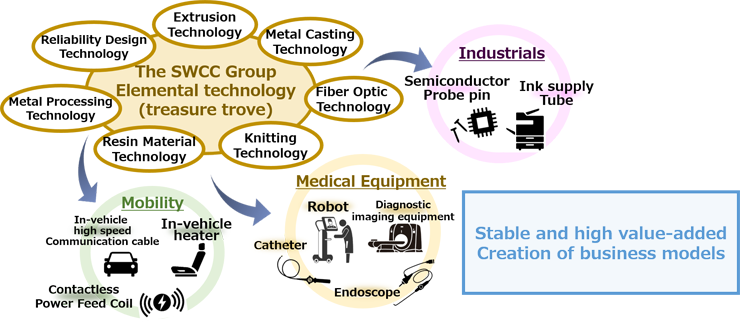
3. Introduction of ROIC management
ROIC was introduced in FY 2019 to evaluate the performance of each business. We have ensured transparency and objectivity by numerically evaluating each business using ROIC as an indicator and have withdrawn from businesses with low profitability and eliminated businesses with low productivity. Specifically, the company has been implementing structural reforms, including the sale of its low ROIC rubber wire business and the dissolution of an Aomori subsidiary that produces metal communication cables and other products and a subsidiary that produces wire harnesses. As a result, the ROIC, which had been in the 3% range in the past, improved to 11.9% in fiscal year 2024.
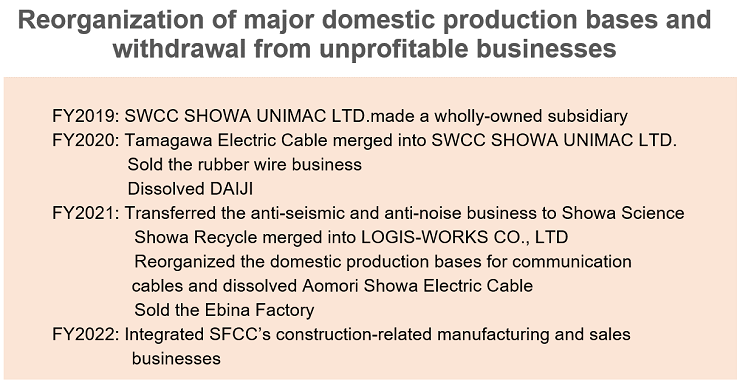
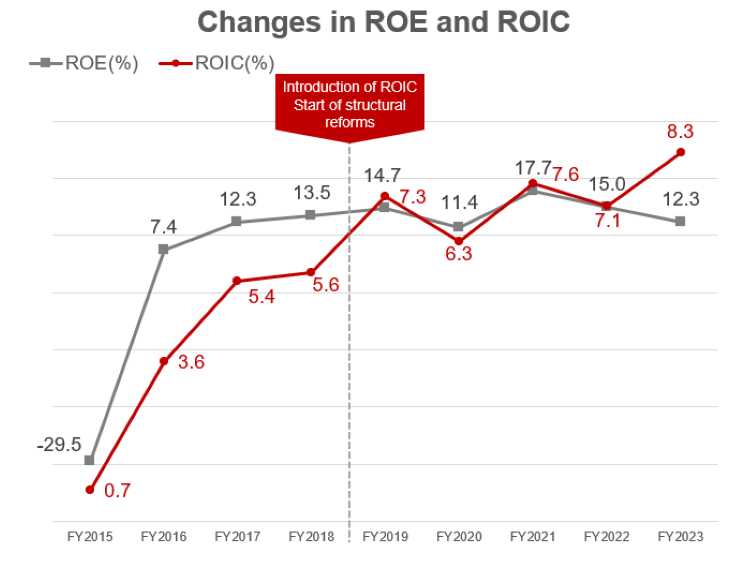
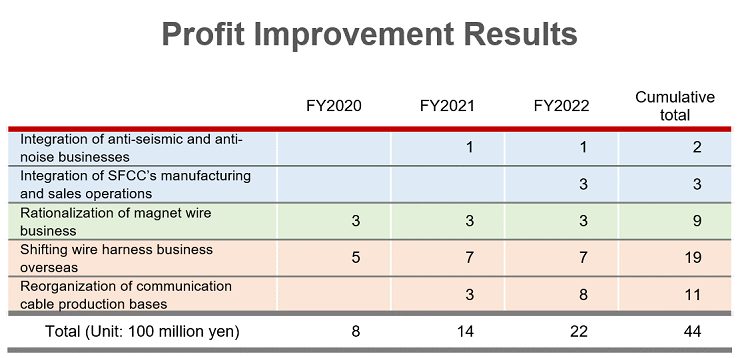
Main Segment Structure
Our Business Domains
Since its founding in 1936, SWCC has leveraged its extensive elemental technologies to support social infrastructure and contribute to a sustainable society. In 2019, the company adopted a segment-based structure and now operates under two main segments: the Energy and Infrastructure Business and the Communication and Components Business.
Our Two Segments and Corresponding Markets
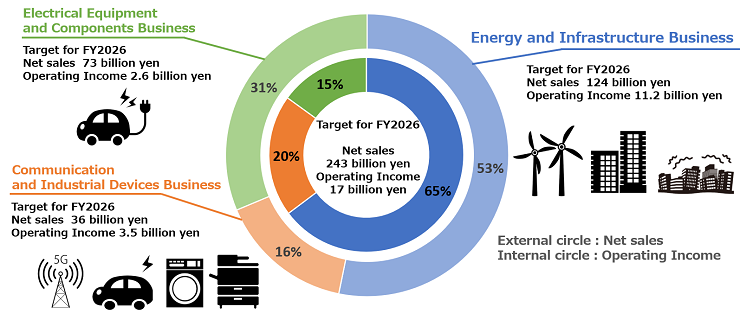
Energy and Infrastructure Business
As SWCC's core business since its founding, this segment has provided electric wires and cables that support Japan's social infrastructure. We offer a wide range of products that connect power plants to homes, including solutions that protect lives and infrastructure from disasters like earthquakes. By adapting power cables, electrical equipment, and seismic isolation products to modern needs, we pursue high-quality solutions for the next generation. Centered around our flagship product, SICONEX®, we promote a solution-oriented business in the power market under the SICOPLUS® strategy.
Communication and Components Business
This segment delivers advanced products and solutions for information and communications, automotive, and industrial equipment sectors. Based on high-quality material technologies, our wide-ranging lineup includes telecom cables, automotive parts, electronic components (such as semiconductor testing devices), wire harnesses, copier parts, and factory automation cables. We are expanding our global sales and production systems while enhancing our portfolio of high-value-added products.
Strategic Products
The SWCC Group's accumulated wisdom and technologies are utilized not only in the world of infrastructure and telecommunications, but also in various fields such as automobiles, railroads, medicine, FA, and IoT.
On this page, we introduce our main strategic products in each of our four business segments.
~ Energy and Infrastructure Business Segment ~
Compact connectors for high voltage power cables "SICONEX®"
What's SICONEX® ?
Environmentally friendly and compact connectors for high voltage power cables using innovative insulation technology, mainly used in power transmission and distribution facilities, transformers, power plants and substations.
Our company differentiates itself through its unique product design that innovates environmental friendliness, earthquake resistance, and ease of installation.
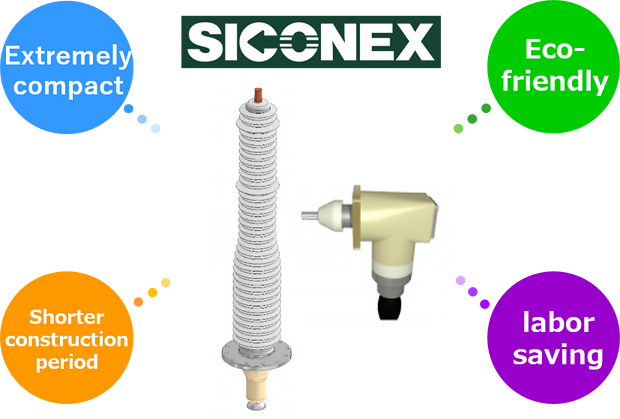
Scenes where SICONEX® is useful
Electricity produced at power plants is sent via power cables, which pass through substations, where it is converted to the appropriate voltage for each home, factory, building, etc., and then shared. Power connection components are indispensable for connecting power cables to each other, as well as to power equipment such as switchgear and transformers in substations and power cables.
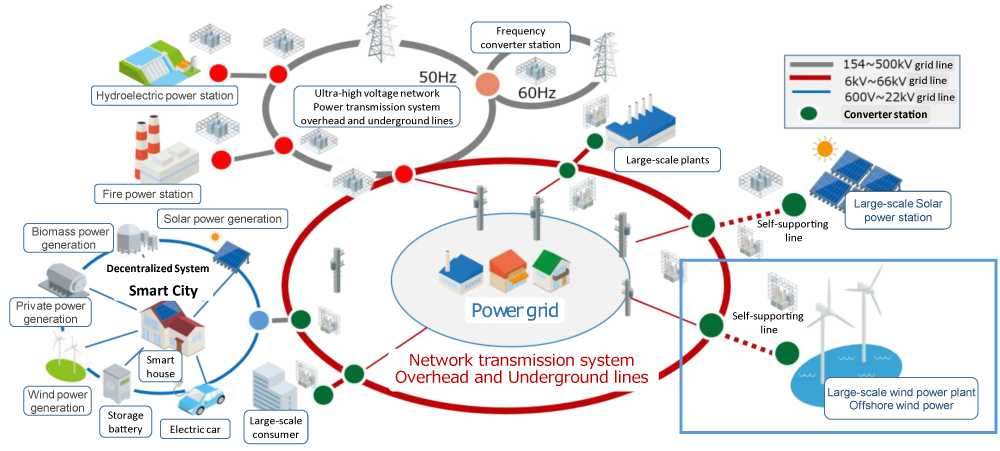
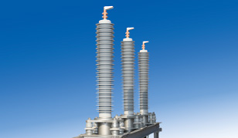
Electric power transmission and distribution equipment
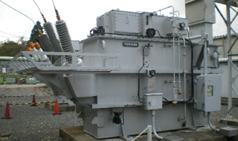
power transformer
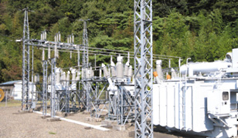
Substations and power plants
SICONEX® Product Lineup
SICONEX® that realize compactness, lightness, labor saving, and safety
Type T terminator
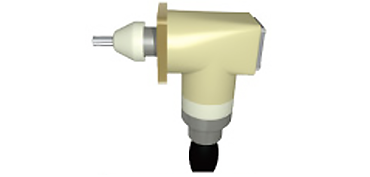
In order to transport electricity, power cables need to be connected to power equipment such as transformers, and the connection point is called the termination connection.
Directmold

Completely dry solid insulation structure with silicone rubber molded directly onto the surface of the epoxy bushing. High environmental friendliness and safety due to the use of epoxy resin instead of insulating oil for the internal filling. High degree of freedom in mounting orientation and low risk of oil leakage. Due to its small size and light weight, it does not resonate even in a huge earthquake, making it highly resistant to earthquakes.
Smart Cable Heads
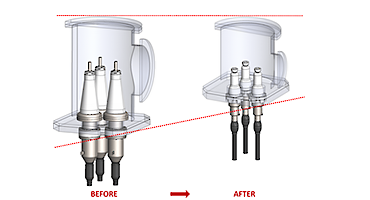
These products are designed to connect power equipment and CV cables, and are available in voltage classes ranging from 66/77kV to 275kV. These products are designed to reduce the total space required for power equipment and substations.
SICONEX® solves a problem in the field
SICONEX® solves various problems of electric power infrastructure with new technologies and ideas.
Conventional termination joints were all assembled on site, but the plug-in structure of SICONEX® allows connection work to be carried out by inserting the connection material into the cable head pre-installed on the power equipment, thus saving labor on site and shortening the construction period. In addition, the conventional porcelain casing type air termination connection was injected with insulating oil inside. By using solid insulation, we have created a completely dry product that is lightweight, compact, environmentally friendly, and highly reliable.
【 Plugin structure 】
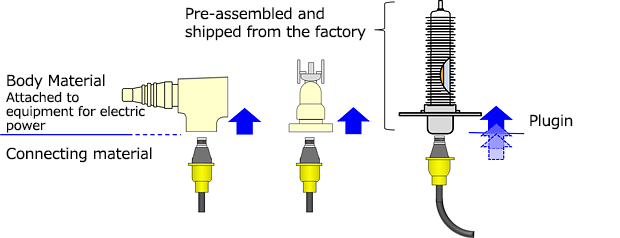
【 Completely dry construction 】

【 Comparison of Product Size 】
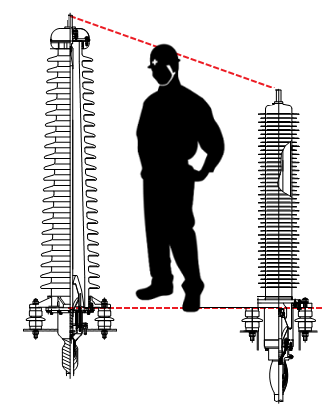
【 Comparison of Work Process 】

SICONEX® Growth in demand
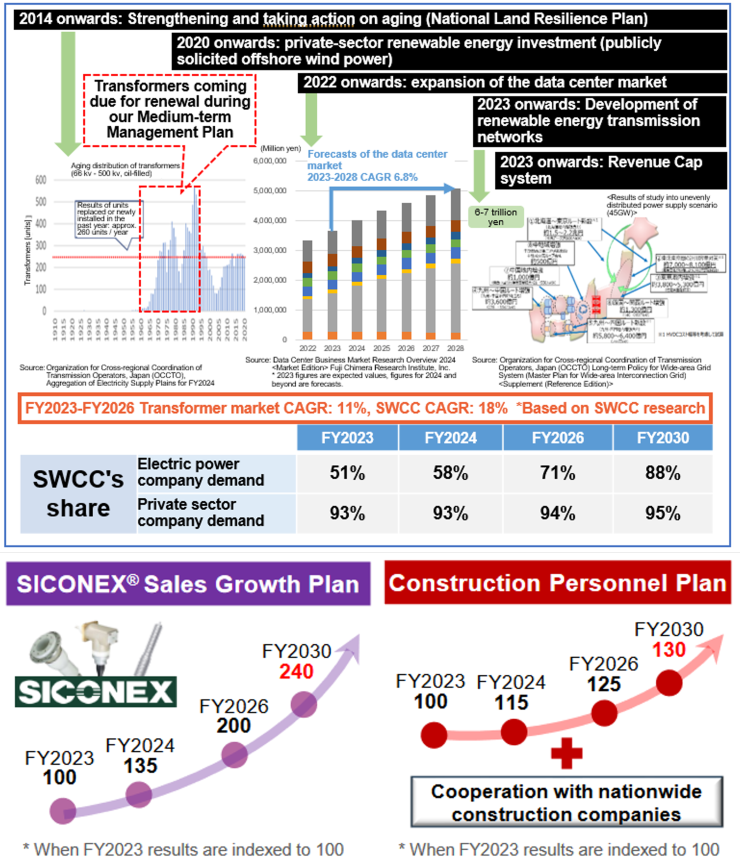
~ Communication and Industrial Devices Business Segment ~
Rollable ribbon "e-Ribbon®" for ultra-fine, high-density optical cables
What's e-Ribbon® ?
e-Ribbon® is a rollable ribbon for ultra-fine, high-density optical cables.
With the growing demand for large-scale data centers due to the spread of the Internet, e-Ribbon®, which can accommodate a large amount of optical fiber and improve the workability of wiring installation, are now attracting a great deal of attention.
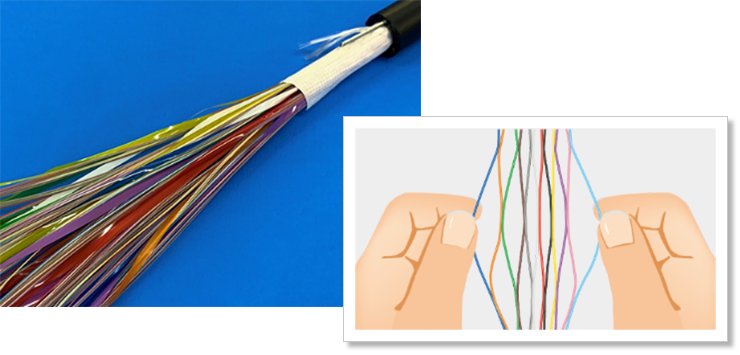
e-Ribbon®
Scenes where e-Ribbon® is useful
Hyperscale data centers with high processing power and enormous storage capacity are a key component of the information and communications infrastructure, and are expected to grow even more rapidly in the future. On the other hand, data center operators are constantly facing stiff competition for capital investment and operating cost reductions.
Therefore, we must face the urgent challenge of laying more optical fibers in a limited space in a fast and efficient manner. In addition, the pressure of rising construction labor costs in developed countries cannot be ignored. Under these circumstances, ultrafine-diameter, high-density optical cables that enable high-density and efficient wiring installation work play an active role.
Rollable Ribbon "e-Ribbon®" satisfies both needs.
The more advanced the physical layer infrastructure of the data center, the more optical fibers are routed, and the more complicated it becomes to connect a large number of optical fibers.
For this reason, optical tape core wires, in which several individual optical fibers are bundled together and coated in a batch, are now used, but while it improved workability, it was weak against curvature in the width direction and had problems such as a large outer diameter when storing large quantities in optical cables.
On the other hand, although it is possible to store a large number of single-core optical fibers in an optical cable, smooth operation cannot be expected when connecting each optical fiber.
In response, we applied our optical design technology to develop e-Ribbon®, Rollable Ribbon in which many optical fibers are precisely linked together while maintaining the deformable and flexible characteristics of single-core optical fibers.
e-Ribbon® suppresses strain on the optical fiber itself even when stored in large quantities in a cable, and enables batch splicing of multiple fibers when performing splicing work.
Therefore, the two needs of reducing cable diameter and improving workability during wiring can be met at the same time.
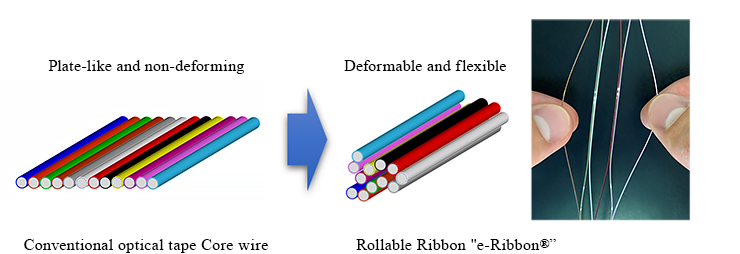
The fastest, most efficient, transportation cost-saving, benefit-packed e-Ribbon®.
The reduction of cable diameter and improvement of workability are directly related to the cost of wiring installation work. When laying a large amount of optical fiber in a confined space such as an existing conduit, additional new conduit may be required, but a smaller diameter cable is not necessary.
The thinner diameter also makes it possible to wind longer lengths on a single drum. For example, when laying a 12-km cable, an ultra-thin, high-density optical cable using e-Ribbon® (= e-Ribbon® cable*1) requires less than half the number of connection points compared to conventional cables.
Furthermore, e-Ribbon® cables can be connected in batches of multiple cores, which speeds up the work and allows wiring installation to proceed in the fastest and most efficient manner possible.
Not only that, but the number of drums to be loaded on trucks can be reduced, which is beneficial in terms of transportation costs. Reducing the number of trucks used for loading is also effective in reducing CO2 emissions during transportation.
*1 In case of e-Ribbon® Slot-less Cable
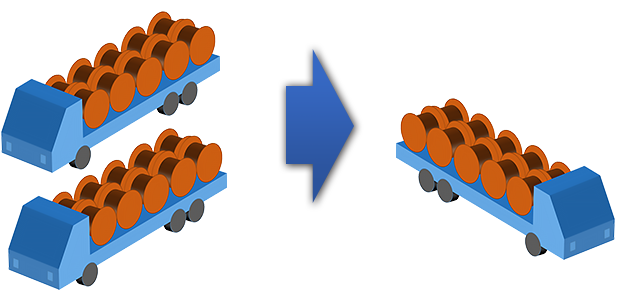
Only one 10-ton truck is needed to transport 12,000 core-km worth of optical cables.
Aiming to promote e-Ribbon® in anticipation of the ICT society beyond the New Normal Era.
In business, remote work has rapidly spread as an "initiative to reduce contact opportunities," and in general life, games, video streaming, online shopping, and food delivery have become widespread due to the increase in "nest egg demand." The era has evolved into a new normal.
As these changes in society continue to accelerate, the speed and smoothness of Internet and Web access will become increasingly essential, and large amounts of data will be increasingly concentrated in data center infrastructure. Hyperscale data centers will focus on increasing optical fiber for the foreseeable future, and the use of thin, high-density optical cables will expand.
Based on our track record of e-Ribbon® cables in Japan, we have developed the thin, lightweight, high-density "e-Ribbon® Slot-less Cable" and "e-Ribbon® Loose Tube Cable" to meet customer needs for the mass installation of optical fibers in overseas data centers, which will continue to expand in the future.
We have also added 200㎛ optical fibers, which are thinner in outer diameter than ordinary optical fibers, to our product lineup, and will promote e-Ribbon®, a unique technical Rollable Ribbon with easily deformable but precisely linked optical fibers, throughout the world.
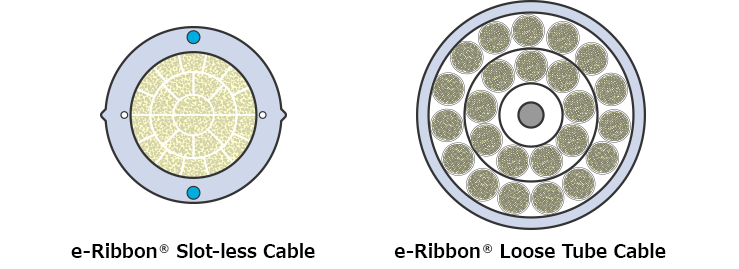
※ e-Ribbon® is a trademark of SWCC SHOWA CABLE SYSTEMS CO.,LTD.
National Policies that Provide a Tailwind
The growth potential of Japan's power infrastructure market is remarkable, supported by the following favorable factors.
I. Aging Power Infrastructure
With technological advances demanding stable power supply, systematic and ongoing renewal of aging transmission and distribution equipment is essential. Continuous demand is expected for our power connection device, SICONEX®.
≫ For details, refer to the Ministry of Land, Infrastructure, Transport and Tourism website.
II. Revenue Cap System
In April 2023, a revenue cap system was introduced alongside the expansion of electricity retail liberalization to curb excessive pricing. This system enables planned investments, making future forecasts easier and improving business profitability.
≫ For more information, visit the Ministry of Economy, Trade and Industry website.
III. Renewable Energy
The FIT and FIP schemes promote the introduction of renewable energy. These systems improve cost recovery for power generation facilities, supporting stable demand for our power equipment components.
≫ For more information, visit the Ministry of Economy, Trade and Industry website.
IV. Work Style Reform Driven by the 2024 Labor Regulation
With the construction industry also facing pressure to improve working conditions, SICONEX®, with its lightweight design and reduced installation time, offers a competitive advantage that contributes to rising demand.
Related products

